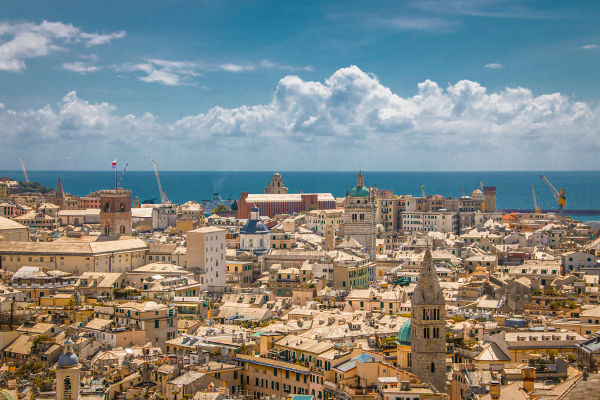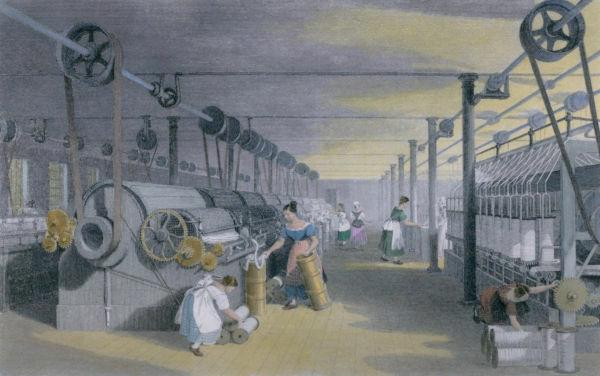O commercial and urban renaissance happened in the passage of High Middle Ages to the Low Middle Ages. This process resulted in great commercial growth, dormant since the disintegration of the Western Roman Empire, and in great urban growth. The renaissance in question is directly related to the technical advances that allowed greater agricultural production and boosted population growth.
read more: The arrival of the Normans (9th century) contributed to the isolation of medieval Europe
Context
Europe went through several transformations that resulted in great population, urban and commercial growth. This Europe with its reduced population, weakened commerce and sparsely populated cities was a direct consequence of disintegration of the Western Roman Empire It's from establishment of the Germanic peoples in Western Europe.
The transformations of this resulted in pests, wars and famine, translated into death. The lack of security led people to move to rural areas in order to approach food-producing places and seek refuge with a nobleman. This closure around rural areas gave rise to the
feudalizationEurope, weakening trade.This picture continued until the tenth century, and the changes may have had technical advances in agricultural production as a starting point. These advances ensured a considerable increase in production, with historian Hilário Franco Júnior stating that, during the low middle age, each seed planted resulted, on average, in 5.5 grains of rye, 4 grains of wheat and 3 grains of oats|1|. Based on this scenario, we had the various transformations that gave rise to urban and commercial growth.
read more: The main events of the Middle Ages in the 5th and 10th centuries
urban renaissance

As mentioned, urban renaissance is directly related to increased agricultural production. This increase, in addition to being the result of technical improvements, came from an improvement in the general temperature in Europe, which guaranteed more land to be cultivated. With more food available, the European population has increased significantly.
Thus, in the year 600, the population of Western Europe, which was 16.3 million, jumped to 22.1 million, in the year 1000, according to data brought by Hilário Franco Junior|2|. The French historian Jacques Le Goff, in turn, brings data that state that, in the year 600, the European population was 14.7 million, while, in the year 1000, it had jumped to 22.6 million|3|.
This population growth directly reflected urban growth in Western Europe, as many serfs fled from the manors who inhabited to escape the imposed obligations. This urban growth meant that the city's cores were expanded beyond its walls, forming the boroughs.
Do not stop now... There's more after the advertising ;)
In addition, urban growth has promoted a diversification of economic activities, since a series of trades began to emerge to meet the city's internal demands. With the city's growth, power was also transferred, from the bishops, to the inhabitants of the increasingly rich and influential towns, the bourgeois.
The urban renaissance is also directly related to the commercial renaissance, as the demands of the first scope allowed the strengthening of the second, and the establishment of merchants on the outskirts of cities, to meet the demands of the cities, attracted people and intensified the urban population increase in the Europe.
Urban growth, in turn, cannot be seen in an exaggerated way, since, in the 12th century, the population of cities represented only 20% of the entire population in Western Europe, which followed, therefore, as a largely ruralized world. Some European cities, however, had a significant population, such as Paris, with 200 thousand inhabitants in 1300; already Florence and Venice had a population of more than 100,000 inhabitants at the same time|5|.
Accessalso: Waldenses: heretical group excommunicated by the Church in the Middle Ages
commercial renaissance
![The commercial renaissance ensured the development of fairs around some cities.[1]](/f/8977c46b9bf60435c12e9d13470033c2.jpg)
The commercial renaissance, as mentioned, is also related to increased agricultural production and urban growth. This increase in production guaranteed a surplus that could be sold. The performance of traveling merchants in this context it contributed significantly to the circulation of goods.
However, difficulties in locomotion due to the number of bad roads, the dangers of itinerant life and monetary difficulties pushed many traders to the sedentary. They settled on the outskirts of cities, the towns, because there was a constant demand for goods of the most varied types there.
At first, the commerce installed near the cities was focused on the sale of luxury goods or first necessity items, like salt, according to Jacques Le Goff|6|. It was only over time that the variety of products began to include basic items, as the grains of the surplus of production.
The surplus that started to be commercialized gave a great boost to the businessmaritime in the Mediterranean region, especially because cities like Venice and Genoa they were compelled to navigation because of the proximity of the sea. Mediterranean trade had a considerable boost with the beginning of the Crusades — an event that opened up eastern trade to Italian merchants.

The development in commerce using navigation as a means of transport gave rise to two important commercial poles: one dominating the Italians, to the south, and another dominated by the call turns onHanseatic, at North. At Champagne fairs, in France, were the meeting point between merchants from these two poles. They extended throughout the year in lagny, Bar-sur-Aube, provinces and troyes.
Despite this meeting point in Champagne, the roads, as mentioned, were dangerous places for merchants. Thus, the contact between the Italians and the Hanseatic League took place mainly by sea, on routes that linked Italy to Belgium and England. Medieval traders also opened up important routes that took them to the east, including Palestine and Egypt, to the region of baltic countries and even to region of present-day Russia, at the time, occupied by the Kievan Rus.
We cannot forget that the commercial renaissance brought a demand that had long been weakened: Ocurrency use. Commercial growth made merchants and buyers need the coins, as bartering was unfeasible in some cases. By the 13th century, a number of regions in Europe had their own minted coins.
The commercial renaissance paved the way for the price of goods, and Jacques Le Goff states that if the fruit (any type of grain) cost index 100 (measure of value created by he as an example) between 1160-1179, some centuries later, in the period between 1320-1339, the same instrument cost 289,7. Wages, in turn, did not keep up with this significant increase.
Grades
|1| JUNIOR, Hilário Franco. the Middle Ages: the birth of the West. São Paulo: Brasiliense, 2006, p. 39.
|2| Idem, p. 24.
|3| LE GOFF, Jacques. The civilization of the medieval West. Petrópolis: Voices, 2016, p. 56.
|4| JUNIOR, Hilário Franco. the Middle Ages: the birth of the West. São Paulo: Brasiliense, 2006, p. 23.
|5| LE GOFF, Jacques. The Medieval Roots of Europe. Petrópolis: Voices, 2011, p. 147.
|6| LE GOFF, Jacques. The civilization of the medieval West. Petrópolis: Voices, 2016, p. 69.
Image credits
[1]THE. Aleksandravicius and Shutterstock
By Daniel Neves
History teacher


